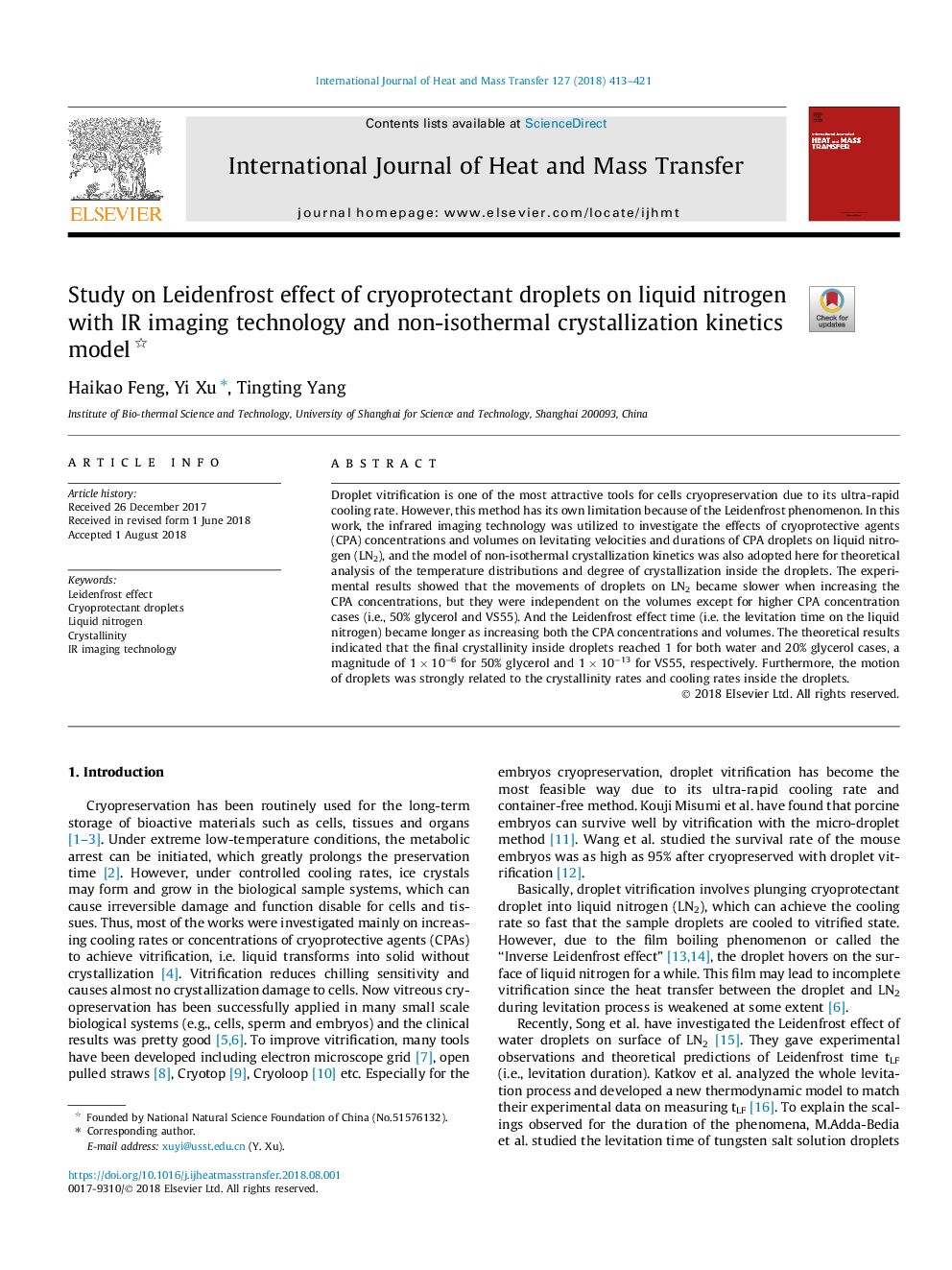| Article ID | Journal | Published Year | Pages | File Type |
|---|---|---|---|---|
| 8941989 | International Journal of Heat and Mass Transfer | 2018 | 9 Pages |
Abstract
Droplet vitrification is one of the most attractive tools for cells cryopreservation due to its ultra-rapid cooling rate. However, this method has its own limitation because of the Leidenfrost phenomenon. In this work, the infrared imaging technology was utilized to investigate the effects of cryoprotective agents (CPA) concentrations and volumes on levitating velocities and durations of CPA droplets on liquid nitrogen (LN2), and the model of non-isothermal crystallization kinetics was also adopted here for theoretical analysis of the temperature distributions and degree of crystallization inside the droplets. The experimental results showed that the movements of droplets on LN2 became slower when increasing the CPA concentrations, but they were independent on the volumes except for higher CPA concentration cases (i.e., 50% glycerol and VS55). And the Leidenfrost effect time (i.e. the levitation time on the liquid nitrogen) became longer as increasing both the CPA concentrations and volumes. The theoretical results indicated that the final crystallinity inside droplets reached 1 for both water and 20% glycerol cases, a magnitude of 1â¯Ãâ¯10â6 for 50% glycerol and 1â¯Ãâ¯10â13 for VS55, respectively. Furthermore, the motion of droplets was strongly related to the crystallinity rates and cooling rates inside the droplets.
Related Topics
Physical Sciences and Engineering
Chemical Engineering
Fluid Flow and Transfer Processes
Authors
Haikao Feng, Yi Xu, Tingting Yang,
